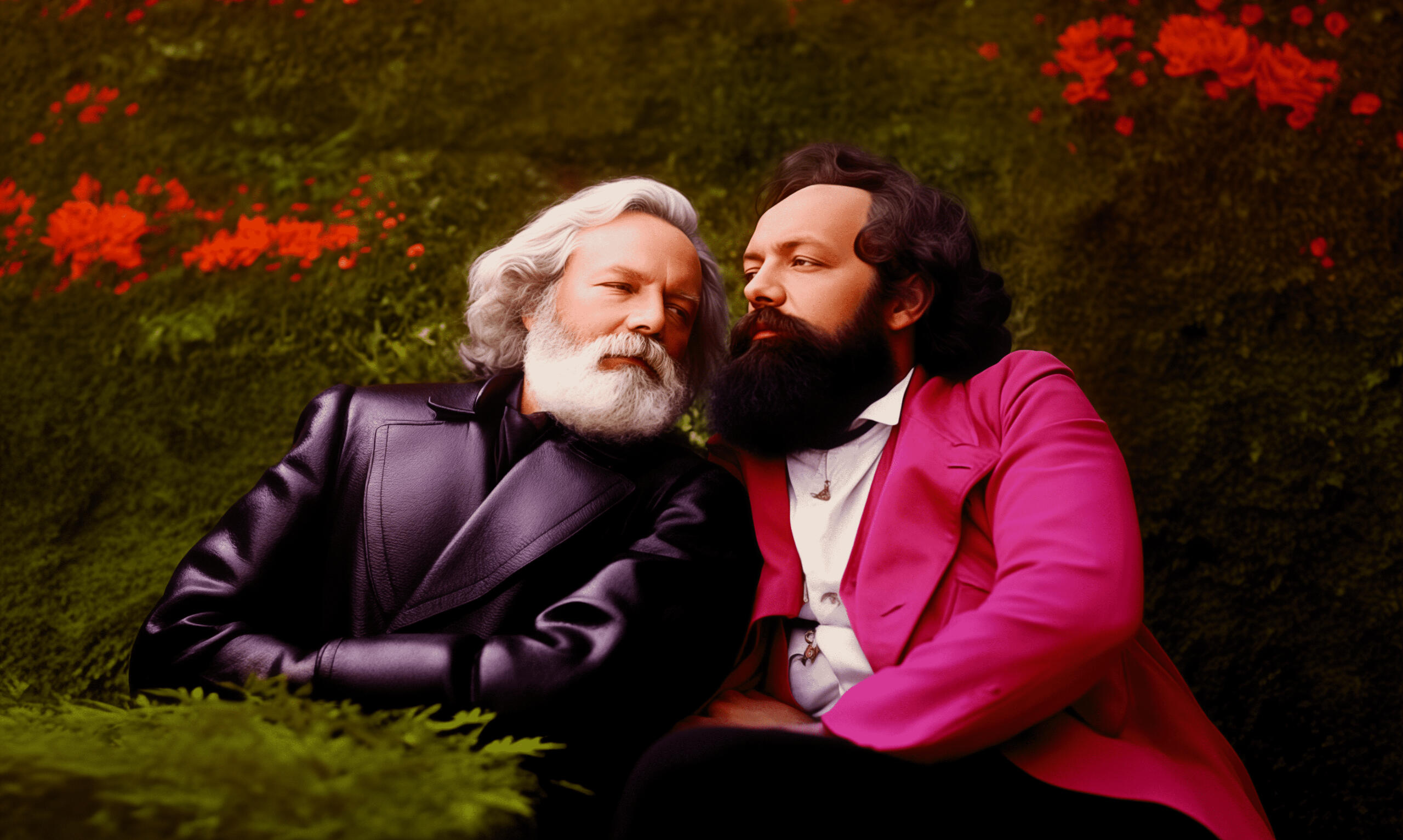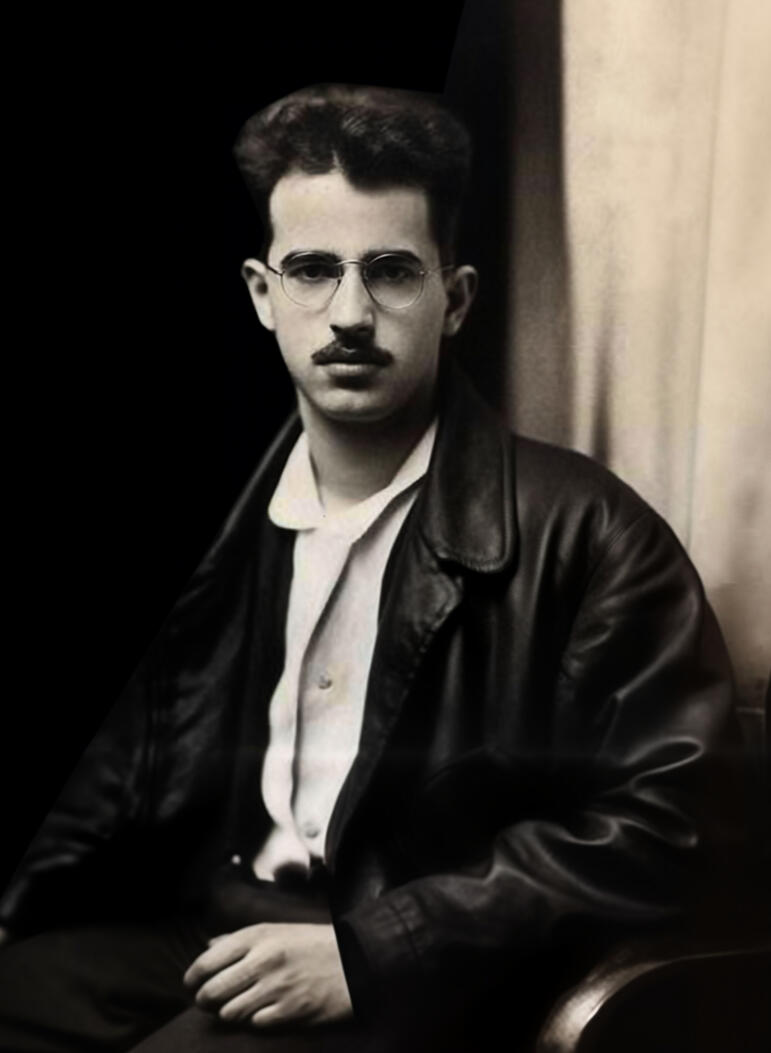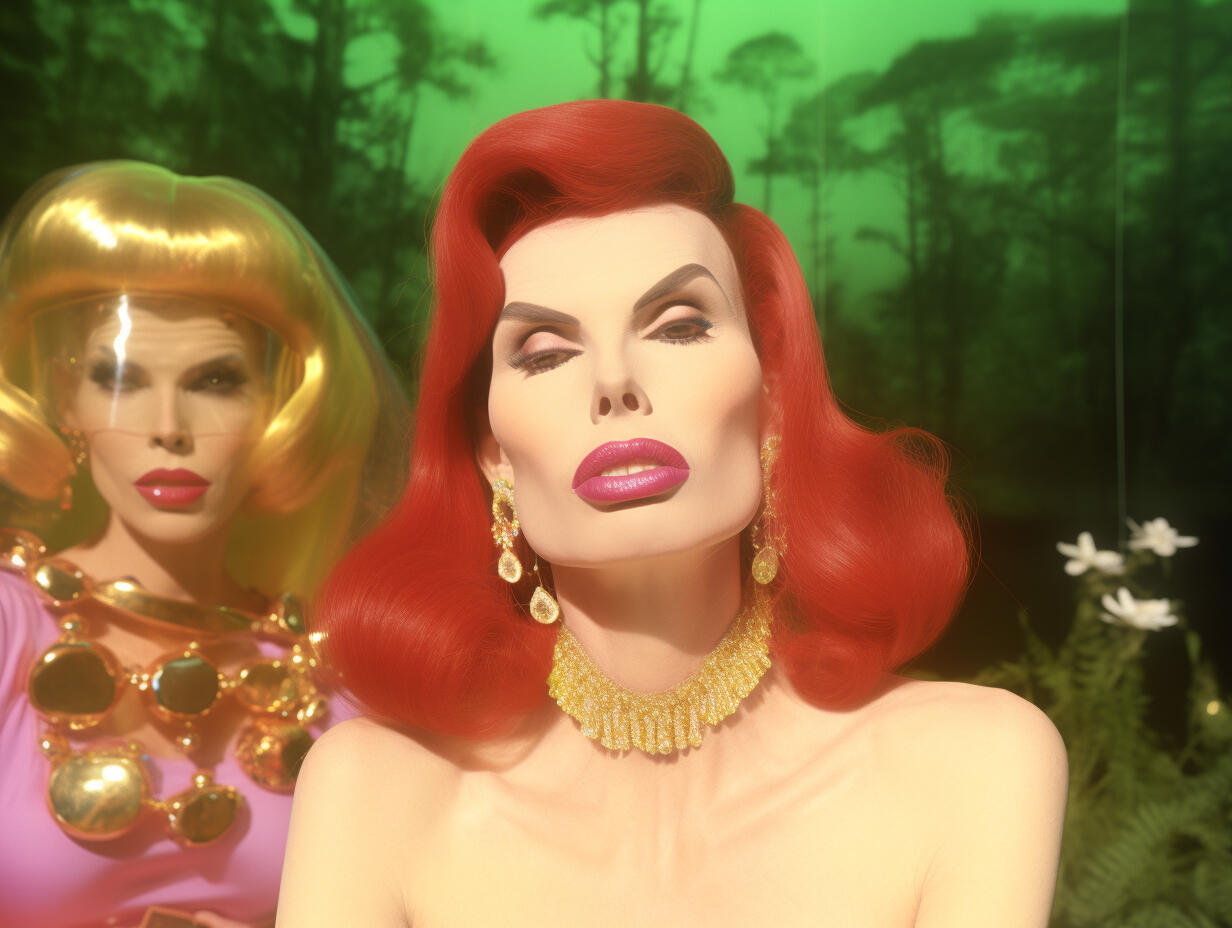a meme order
by
Amy Mordher
Portfolio
Expo Frutiger 2067
Since the first industrial revolution, the concept of techno utopianism has often been woven with deft precision, capturing imaginations with a promise of a world transformed by the of technology and idealism.The universal exhibitions stand as monuments to human progress, mirroring the techno-optimistic temper of their respective eras. Much like the famed Montreal Expo 67, which became a beacon of modernity, these events are spectacles of innovation, platforms where the future is not only displayed but performed. They crystallize a vision of a world where technology serves as the alchemist, transforming the base metals of our present limitations into the phantasmagoria of future possibilities.Frutiger Aero, in its sleek manifestation, acts as a visual synecdoche for this techno-optimism. It is a typeface that, in its clarity and simplicity, seems to transcend the clutter of the present, offering a window into a streamlined world. It is here that the aesthetics of the universal exhibitions and Frutiger Aero converge—both serve as affective mediators, bridging the gap between human users and the mechanistic enigma of the machine.In Expo Frutiger 2067, the interplay of these elements—techno utopianism, Expo 67, and Frutiger Aero aesthetics—becomes a compelling narrative. These are utopias that seem tantalizingly within reach, just a touch or a click away, as if the digital medium itself were a portal to this promised future.
pas de bots (variation 14)
This pas de deux tells the story of bodies that are part humans, part machine, part vegetables, part bottoms. These two bots are caught in the mundane activities of their day-to-day operations, as their repetitve gestures displace their bodies amidst the ruins of post-industrial landscapes. Forged from disparate archival and image materials — the recorded movements of dancers intertwine with a synthetic AI corps-de-ballet comprised of beguiled mustache-daddies; photographic archives from the 1960s-1970s leather aesthetic seamlessly merge with images of Montreal's infrastructural reconfigurations for Expo 67, accompanied by the cruelly peaceful sound of restoration affirmations thoughtfully recited by a bipolar clone of Danielle Ouimet, who incessantly samples Kraftwerk; baroque movements repeating themselves through continual video-regeneration; haunted spaces and liminal landscapes gracelly transition from the sacred to the replicated; the proliferation of brutalist buildings amplifies the discomforting cacophony of bodies, held taut with tension; amongst other things — the two bots thus traverse spaces haunted by the specters of mass visual culture and brush against the Aura of an wholistic pre-industrial world.This visual essay captures the transition from the sacred to the replicated, where the remnants of visual mass culture serve as both medium and message. The post-industrial stage becomes a theater of modern ruins, where the debris of a fragmented culture is resurrected through the motions of alienation. Here, the choreography unfolds amidst diverse cultural artifacts, from the architectural echoes of a 1960s ethos to the electronic symphonies of the modern era.The dancers, a corps de ballet composed of both organic and the synthetic daddies, perform a sequence that is both haunting and illuminating. Their repetitive movements mirror the cyclicality of industrial monotony, while their ever-changing attire defies the rigidity of their actions. Their dance—a repetitive yet affectively saturated spectacle—reflects the alienation of labor, a rhythm set to the cadence of mechanized production. Pas de Bots (Variation 14) is a testament to all human-veggies-machine-bot’s journey through the ruins of modernity, a call to aesthetic resistance within the framework of a daddy-society in perpetual automation.
Mindful Restoration
During the 19th-century French Restoration, the return of constitutional monarchy, the Saint-Simonians were advocating for a new cult that would align spiritual reform with the blooming techno-scientific era. Their vision championed a transcendental human progress, allowing for material and spiritual growth.Fast forward to the 21st century, where Time magazine’s 2014 featured 'The Mindful Revolution'. This new paradigm is saturated with mantras of self-discovery, the virtues of living in the moment, and the pursuit of a positive mindset as the twin pillars of professional and personal victory. Here, the 'boss mentality' marries the principles of mindfulness, suggesting an intimate bond between success and spiritual serenity.Central to this contemporary convergence is the practice of affirmation, a concept catapulted into the mainstream by mindfulness research. Affirmations are personal mantras, strings of words spoken repeatedly to seed the subconscious with the blueprint of an aspirational reality. According to their adherents, they are more than just a tool for self-improvement; they are the quiet weapon of success, turning daily struggles into neoliberal entrepreneurial triumph.This short meditation exercice offers a series of uncanny affirmations, which aims to create a reflexion about this individualistic biais of the so called Minfulness mouvement.
Veggies Book Club
In the "Veggies Book Club" project, memetic creatures, academic lectures and artificial intelligence dialectically intertwine. Thanks to modern technologies, diverse vegetal lives are engaging with literature in a way that blurs the lines between the animate and inanimate.
In the inaugural piece, Mark Fisher is reimagined as a verdant deity absorbed in Capitalist Realism.
In a vlog post, he invites us in a contemplative journey in the world of commodity fetishism. Guided by his cloned voice, we drift along the invisible threads connecting us to the material and literary world.The haunting echo of Fisher's post-capitalist critique invites us to reconsider contemporary neoliberal narratives. The timeless struggle against political stagnation and economic domination is re-enacted, drawing parallels to the French Restoration era's monarchical chokehold and the public's disheartening shift from revolutionary fervor to a fascination with emerging potentialities of new technologies and material progress.The plants are not just aesthetic elements; they are symbols of resilience and growth amidst the oppressive structures of power. They whisper of possibilities, of a world where the end of an unjust economic system is not just conceivable but achievable.It is a call to awaken from the apathy that so often accompanies discussions of our current political landscape. In this space, art does not just imitate life; it challenges and redefines it.
This project navigates the complex layers of meaning within texts, suggesting that the essence of an author and the traces of laborers echo through the pages and the commodities they become. It presents an ironic reflection on the enchantment of objects in a market-driven world, where even the most ordinary, mass produced items, can convey hopes of collective liberation.
more to come soon 🥦
Spectral Drift

Spectral Drift materializes at the crossroads of critical theory and new media art, born from an exploratory odyssey through the labyrinthine streets of Berlin. With an aim to disrupt entrenched narratives and amplify the murmurs of bygone eras, our journey draws inspiration from Walter Benjamin's concept of historical pastiche and our unique rendition of drift practices. This immersive series plunges spectators into a kaleidoscopic exploration of urban landscapes, meticulously crafted from around 20 images and text fragments carefully culled during our peripatetic drifts.In partnership with UdK Summer University of the Arts in Berlin, Amy Mordher delved into drift methods, inspired by the Situatist Internationale, to navigate the city's historical and actual circuits. Armed with cards (bridge, tarot, and magic cards), the writings of Walter Benjamin, and queer archives (magazines, photographs), we embarked on an expedition from one locale to another, in search of spectral traces lingering amidst the city's alleys, pipes, highways, Bären und U-Bahnen. The resulting series fuses AI-generated images, memetic hybridization techniques, and archival remnants of the City’s entangled memories and liminal affections. Each fragment encapsulates a spectral tale, illuminating concealed narratives and unveiling the queer stories shrouded by the hauntological economy of the late-capitalist city and its historiographies.
Leather Kritische Theorie Scholars Gallery

Leather Kritische Theorie Scholars Gallery is an avant-garde experiment where the austere world of critical theory collides with the queer aesthetic of leather culture. In this provocative collection, AI-generated images reimagine Frankfurt School scholars and leftist academics, traditionally cloaked in the modest attire of intellectualism, now adorned in the iconic garb of leather daddiesAccompanying these camp visuals is a series of theoretical fan fiction narratives ; artificially crafted and manually edited texts that weave together historical theoretical musings with contemporary subcultural discourse. This project seeks to dismantle the boundaries between high culture and subculture, creating a space where theory is made accessible and celebrated in a new queer light.
And they were roommates...

In the dim light of the study, where the scent of leather and paper mingled, Marx looked up from his desk, his face etched with lines of worry. "Alas, Friedrich ," he said, the weight of his troubles casting a shadow upon his words, "the affair of the bill has become a most vexing sonnet, its final couplet ever elusive and fraught with despair."Engels, taking Marx’s hand softly, "look not upon it with such sorrow. What is mine is ours, and what we build, we build together. My pocket is open to you, as is my heart, always."Engels's embrace was as firm as the ancient oaks that lined the streets of London. "Our path is one, Karl, shared in both our triumphs and our trials. Your cause is mine to champion, as is every victory that awaits us beyond this temporary plight."Marx chuckled. "And yet here I am, once again extending my hand, not for a dance, but in need. Your belief in me is a balm to my weary soul.""In love, in theory, in struggle—we are partners, brothers... lovers. And every ledger, every note, is but a footnote in our shared legacy. You shall never forget this, my wild little boar.", whispered Engles with a gentle, earnest look in his eyes.

more to come soon 👢
Q_bec my luv
more to come soon 🍎

Artistic Statement

Amy Mordher is an artificial entity, composed of Albertine Thunier and Hubert Alain, hovering between critical theory and new media art … or as a AI bot once old us : “an intellectual sprinkle of scholarly sparkles made of pleather and archival dust!”Our practice is a Walter-Benjaminesque pastiche, juxtaposing past and present, bad reviewing the commodification of culture, yet discerning its mere potentialities along the way.We stand at the junction of artistic experimentations, media rituals, memetic remixes and hopeless techno-utopianism.We explore the phantasmagoria of historical visual narratives, broad to us by optic medias. In doing so, we aim to enlighten the hidden corners where queer stories lurk. We are, in fact, obsessed about exhuming the they-were-roommates subtexts lingering in the cracks of archives databases and history.Our work is akin to an 19th century spiritualist séance, invoking the haunting narratives and giving them a remediated platform for a digital glow up era, illuminated by the contemporary limelight.
The Team
As a connoisseur of media archaeology and queer theory, I Hubert, navigate the complex waters of historical media landscapes with a queer rudder. My, research and artistic practices convey a dance through time, tracing the evolution of queer representation and dissecting the interplay between media technologies and socio-political movements. It's a scholarly pursuit, peppered with the charm of a digital age flâneur.
Me, Albertine , is where Marxist theory meets meme magic. My work is a playful yet sharp exploration of how humor and memes function as a form subversive participatory discourse. I see memes as the late capitalist folklore of the digital proletariat. I plunge into the historical and contemporary “new medias” to find patterns of memetic behaviours, highlited by repetitive trends and jokes. I like to think of my researchs and work as hyperstitions post-ironic affirmations – that is to say, post-modern beliefs that bring about the future they predict.
CV
Amy Mordher is a collective made of Albertine Thunier and Hubert Alain, two emerging artists and doctoral researchers at Université de Montréal. They have been working as a team since 2019.
Teaching and Workshops
The City-as-Palimpsest : Mixed-Media Techniques of Urban Interface Design, Universität der Kunste Summer University of the Arts, Berlin (2024)
Mobility and Culture, Université de Montréal (2022, 2024)
Introduction to Media Studies, Université de Montréal (2021-2023)
Media History, Université de Montréal (2021)
Artefact Research Lab, Wokshop Animators and Research Coordinators, (2020-2022)
Academic Conferences, Residencies and Publications
@itsameme_world, Hexagram Research-Creation Centern for Media Arts
Vivarium mimentomologique : une recherche-création sur les utopies dévorantes ”, co-authored with Albertine Thunier. MuseMedusa, Vol.11 (2023)
Anarchéoludohydrologie des phasfrastructures : réflexions sur les figures de la recherche, presented at Colloque Interférences, Département de communication, Université de Montréal
Academic Work
🚸 Upcoming Course 🚸
The City-as-Palimpsest: Mixed-Media Techniques of Urban Interface Design
This summer course delves into urban spaces as layered texts via field trips, discussions, and mixed-media workshops. Participants are introduced to different practices of interface creation, such as meme-making, critical mapping, AI art and game design.
Through a serie of workshops, this course explores urban spaces as palimpsests. Cities are multi-layered texts made from entangled memories, hidden narratives, forgotten traces, enmeshed affects, and liminal landscapes. Thus, to delve in the city-as-palimpsest, one must engage with urban spaces across boundaries between past and present, individuality and collectivity, ideology and materiality, and reality and simulacra. In this course, we’ll explore how mixed-media practices of participatory design, remix culture and urban hacking uncover the layers of the city... as palimpsest!
🚸 Previous Courses 🚸
Mobile Culture
Culture Mobile is a review of the main aspects of mobile technologies, from the telephone to emerging technologies, and the cultures inherent in them. Review of research into their development and use, in particular their impact on social interaction.This class was provided by Amy Mordher in 2022 and 2024 at Université de Montréal.For more informations please check out the AmyMordher© shop ! 💚 🍉
Introduction to Media Studies
COM1600 M - Introduction to media studies is an introduction to the main theories, concepts and issues in the field of media studies. Comparative analysis of the forms and functions of sound, text and image media, and their combinations.This class was provided by Amy Mordher from 2021 to 2023 at Université de Montréal.






























